

Union of South Africa
Unie van Zuid Afrika
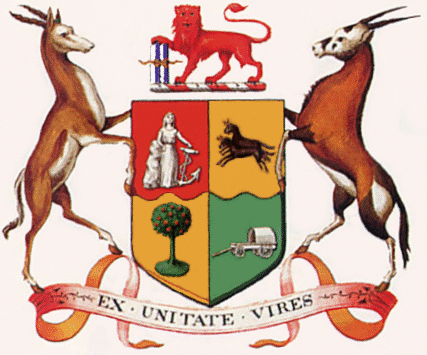
Arms granted by the College of Arms in London (the grant described as being by Royal Warrant) on 17 September 1910. The official blazon reads:
Quarterly per fesse wavy First Quarter Gules a female figure representing Hope resting the dexter arm upon a rock and supporting with the sinister hand an Anchor Argent Second Quarter Or two Wildebeesten in full course at random both proper Third Quarter Or upon an Island an Orange tree Vert fructed proper Fourth Quarter Vert a Trek Waggon Argent And for the Crest On a Wreath of the Colours A Lion passant gardant Gules supporting with the dexter paw four staves erect alternately Argent and Azure and banded Or And for the Supporters, On the dexter side A Spring Buck and on the sinister side An Oryx (Gemsbuck) both proper together with the Motto EX UNITATE VIRES.
Explanation:
The four quarters represent the four provinces making up the Union, and the wavy horizontal line of partition represents the Orange River (called Gariep by the Khoikhoi people, who occupied this river’s valley prior to the arrival of either black or white settlers).
The first quarter contains the symbolic figure of Hope which formed the crest of the Cape of Good Hope Colony’s (Cape Colony’s) arms; the second quarter has the black wildebeest of the arms of Natal; the third quarter the orange tree of the Oranje Vrij Staat (see that republic for a discussion on the kind of tree intended); and the fourth quarter the wagon from the base of the Zuid Afrikaansche Republiek’s arms (although the half-tented wagon shown is in fact a transport wagon, as in the seal of the Transvaal Colony, not a trek wagon or kakebeenwa).
The lion in the crest recalls lions in the arms of England, of Scotland (see Great Britain), and of the Principality of Wales (see the arms of Prince Charles), as well as the Kingdom of the Netherlands and several of the Dutch provinces. Its colouring is that of the lion of Scotland, while its stance is that of the lion in the English crest. The natural lion (Leo leo) is also indigenous to South Africa.
The four staves (one for each province) recall the classical tale of a Roman father who invited his sons to break twigs, and then bound a bundle of them to prove that, just as bound sticks were unbreakable, so they would be strong when they stood together. They also recall the seven bound arrows held by the lion in the Dutch royal arms, symbolising the seven provinces of the kingdom.
The dexter supporter, a springbok (Antidorcas marsupialis), was taken from the arms of the Orange River Colony, and had been regarded as a national symbol since the 1906 rugby tour of Britain by a team representing the four colonies, captained by Paul Roos. The team was dubbed the Springboks, and used green jerseys (a set of jerseys from Cape Town’s Old Diocesan Club had been packed by one of the team members). To this day the national rugby team is called the Springboks and wears green jerseys.
The sinister supporter is a gemsbok (the Afrikaans spelling is now favoured in South African English) or oryx (Oryx gazella gazella), which had been a supporter of the arms of the Cape Colony. The other supporter in the Cape arms was a wildebeest; this animal came into the Union arms in the Natal quarter, and so was not considered as a supporter for the Union.
The motto translates as “Out of Unity, Strength”, and is a translation into Latin of the ZAR’s motto, “Eendragt maakt Magt”.
Although the principal colours of the shield as a whole are red, gold and green, the crest-wreath takes its colours from the first (Cape) quarter.
Background:
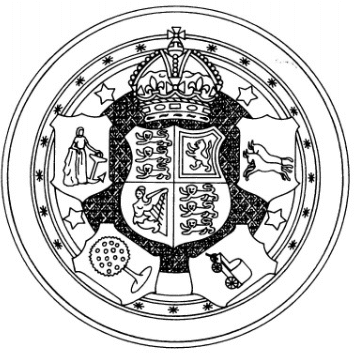 The need for a coat of arms was determined by the fact that the Union of South Africa, which came into being on 31 May 1910, was a constitutional monarchy (see below), so requiring a Great Seal. State Herald F G Brownell calls this device the supreme emblem of sovereignty, the clavis regni, the only instrument by which on solemn occasions the will of the sovereign can be expressed.
The need for a coat of arms was determined by the fact that the Union of South Africa, which came into being on 31 May 1910, was a constitutional monarchy (see below), so requiring a Great Seal. State Herald F G Brownell calls this device the supreme emblem of sovereignty, the clavis regni, the only instrument by which on solemn occasions the will of the sovereign can be expressed.
However, when the first Great Seal was made (at considerable expense) at the Royal Mint in London, it was found that it conflicted with the Royal Warrant in that the arms in its centre were not the quartered Union arms, but the arms of the British monarch,[1] with separate shields representing the four provinces around the edge of the seal.
Since the quarters representing the provinces had been granted as a single coat of arms, and not as separate shields, it was then arranged for a further Royal Warrant to be issued. Dated 4 May 1911, it granted the four quarters as separate coats of arms respectively to the four provinces: a red shield bearing the lady Hope for the Cape, a gold shield with two wildebeeste for Natal, a gold shield with an orange tree for the Orange Free State, and a green shield with an oxwagon for the Transvaal.
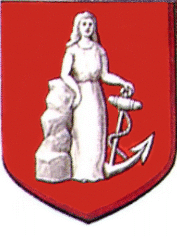
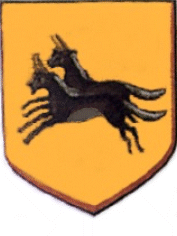
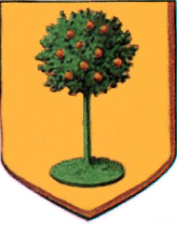
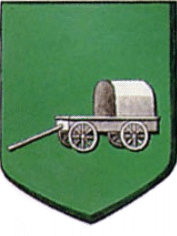
However, when the warrant arrived in Pretoria the Prime Minister’s office reported to London that the arms as granted to the provinces were not acceptable to them. The warrant was not communicated to the provinces, and they carried on using the arms borne previously.
Languages of the Union:
The Union’s official languages were English and Dutch. The status of the official languages was entrenched in the Constitution: the language clause could not be altered except by a two-thirds majority of both Houses of Parliament in joint session.
Flags of the Union:
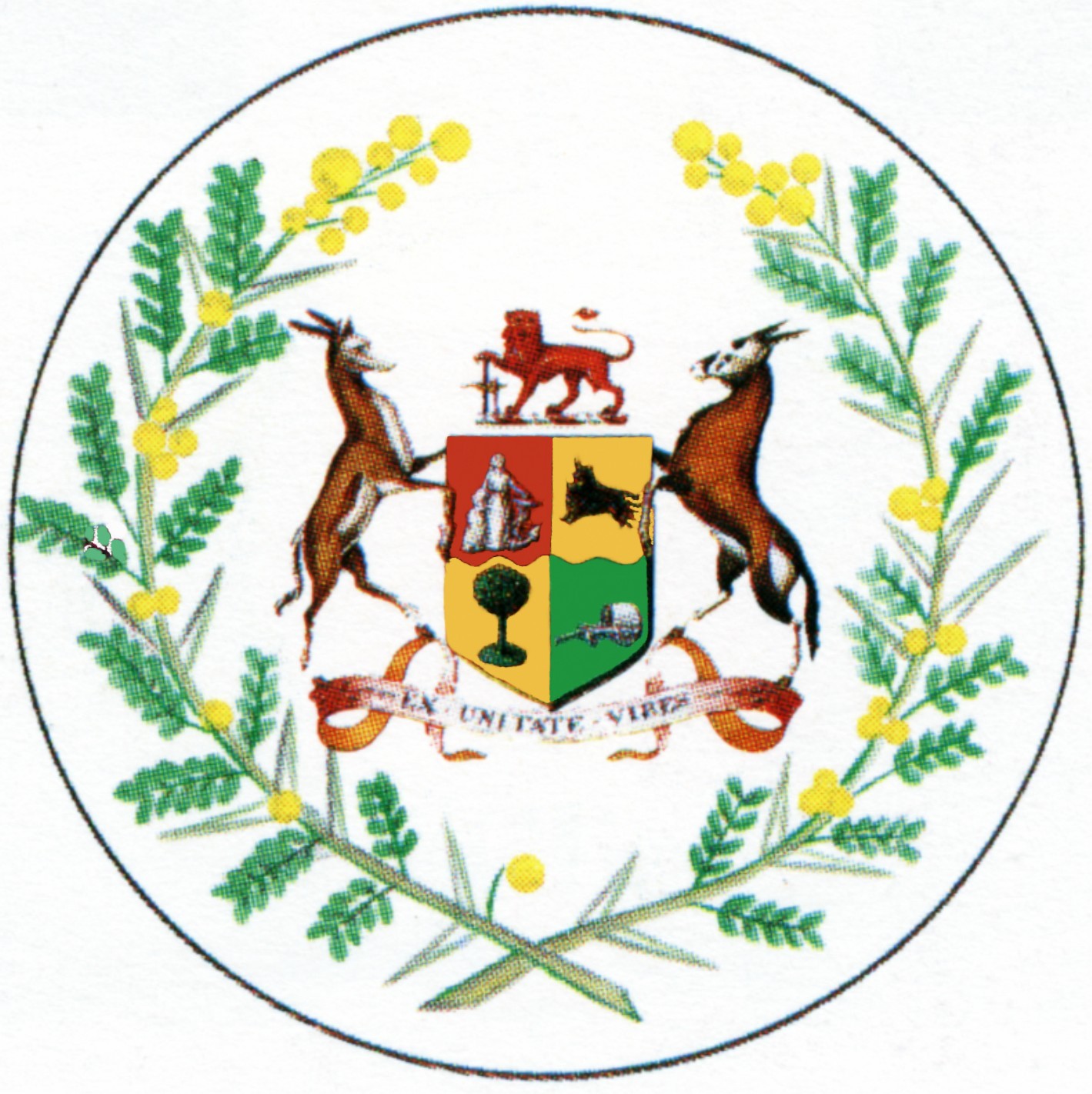
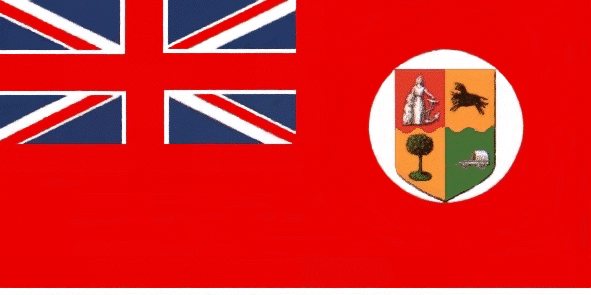 As was the case with other British possessions, the Union’s principal flag was initially the (British) Union Jack, augmented by a suite of flags derived from it which had South African symbols added.
As was the case with other British possessions, the Union’s principal flag was initially the (British) Union Jack, augmented by a suite of flags derived from it which had South African symbols added.
The Governor-General’s flag was a Union Jack with the Union of South Africa’s coat of arms wreathed in flowering mimosa branches on a white roundel at the centre. The Prime Minister, General Louis Botha, favoured the mimosa as South Africa’s national tree. (The term mimosa is no longer used for trees of the genus Acacia, whether indigenous to South Africa or Australian. It is not clear which of the indigenous species is intended, but it is quite likely Acacia karoo.) However, this flag was only for use at sea.
The flag of the Government, on land and at sea, was a Blue Ensign with the shield of the Union arms in the fly, and the merchant flag a Red Ensign also with a Union shield in the fly. The first version of the Red Ensign had the shield on the red background with no contrasting highlight, but in 1912 this was changed when the shield was placed on a white roundel (as shown here). The Blue Ensign, however, continued in its original form, without a white roundel.
Capitals of the Union:
The delegates to the National Convention could not agree on a single capital for the Union, so a compromise was reached whereby Pretoria became the administrative capital, Cape Town the legislative (using the buildings of the Cape Colony’s Parliament) and Bloemfontein the judicial capital.
In the early years of Union the Union Buildings were erected on Meintjes Kop, Pretoria, to serve as the administrative “palace”, and a large courthouse was erected in Bloemfontein as the seat of the Appellate Division of the Supreme Court of South Africa.
The Pretoria/Cape Town split meant that the Governor-General, the Prime Minister, the Cabinet and the top echelons of the administration had to move to Cape Town for the duration of the parliamentary session each year. At the time of writing in 2001 this is still the way South Africa is run, although aircraft and rapid road transport are now preferred for transporting the President and his Ministers and officials, to the trains that were formerly used for the move.
Constitutional development:
The Union was formed on 31 May 1910 as a parliamentary union of the four self-governing British colonies south of the Limpopo River, now become provinces of the Union: the Cape of Good Hope Province (Cape Province; previously Cape Colony), the Natal Province (Natal Colony), the Orange Free State Province (Oranje Vrij Staat/Orange River Colony) and the Transvaal Province (Zuid Afrikaansche Republiek/Transvaal Colony).
The new state was formally called a British Dominion, and its Head of State was the British sovereign (at the time of Union, the newly acceded King George V), represented in South Africa by a Governor-General, appointed on the advice of the British Cabinet. Parliament comprised the Governor-General and two Houses: the House of Assembly and the Senate. The Head of Government was a Prime Minister appointed by the Governor-General and having the support of the majority in the Assembly.
The King’s title, as far as South Africa was concerned, had been laid down by the Royal Titles Act, passed by the Westminster Parliament in 1901. It declared King Edward VII to be King “of the British Dominions beyond the Seas”. At that stage the term “Dominions” covered all the British possessions, but in 1907, at the very first quadrennial Imperial Conference, the status of the self-governing Dominions was discussed.
The Governor-General was simultaneously appointed British High Commissioner for Southern Africa, directly responsible for the administration of the three British protectorates (also known as the High Commission territories) of Basutoland, Bechuanaland and Swaziland. There was an understanding that these territories, and perhaps also Rhodesia to the north, would eventually become part of the Union.
The Post Office of the Union provided postal services (using South African postage stamps) in Basutoland and Swaziland, but not in Bechuanaland. Although South Africa issued one postage stamp on Union Day (31 May 1910), it did not issue a definitive postage series until 1913, and during its first three years used stamps of all four colonies, which were valid for use throughout the Union and in Basutoland and Swaziland.
A major flaw in the Union’s Constitution lay in the franchise. At the National Convention in 1909 the Cape delegates tried to convince the other three colonies of the wisdom of extending the vote beyond white men (only white men had the vote in the Orange River Colony and Transvaal, while Natal’s restrictions on non-white voters meant that virtually none qualified). The Cape franchise, based on property, meant that large numbers of Coloured and black men shared the vote with white men. But the other colonies disagreed, and only in the Cape was a colour-blind franchise accepted for the Union. This was to lead to serious complications.
The Union was not independent, as was demonstrated in 1914 when Britain’s declaration of war against Germany and Austria automatically put South Africa at war with its neighbour, German South West Africa.
The role played by the Dominions in the First World War soon convinced Britain that their status needed to be raised. South Africa, although it first had to suppress a rebellion by commando members, quickly took control in German South West, occupying it until 1919, when the League of Nations granted it a C Mandate. This allowed South Africa to treat South West Africa as a province. South African forces next (in 1916) joined the war against German East Africa, where Boer War commando leader Jan Christian Smuts (a Cabinet Minister) was appointed General Officer Commanding British Forces. Smuts was later co-opted with other Dominion Ministers into the Imperial War Cabinet, where he made a valuable contribution. Smuts and Prime Minister Louis Botha played a significant role at the peace talks at Versailles, where Smuts contributed to the formation of the League of Nations and succeeded as Prime Minister when Botha died suddenly.
Smuts continued to play a part in international affairs at the 1921 Empire Conference, and although he was replaced as Prime Minister by General J B M Hertzog in the 1924 general election, it was Smuts’s ideas that were put forward at subsequent Empire Conferences and led to the formation of the Commonwealth of Nations, comprising Britain and the Dominions.
South Africans, like other subjects of the British Crown, were recipients of royal honours in the form of knighthoods, baronetcies and lesser awards, and in a single instance a barony. However in 1925 Parliament, on a motion by Arthur Barlow MP (Labour), resolved that no South African would in future accept any British title. Since the British sovereign (then still George V) was South Africa’s Head of State, this was a direct affront to the King. It was, however, accepted in London on the principle that the King accepted the advice of his Ministers, whether in Britain or in the self-governing dominions and colonies.
Vir Afrikaans, kliek hier To Part 2 (1930) of this article Comments, queries: Mike Oettle
